Whenever I visit an art museum with medieval or Renaissance collections, I make it a point to check out the depictions of the Virgin Mary and Jesus on display. For centuries religious themes dominated the European art world, and as a result, these “Madonna and Child” or “Virgin and Child” pieces are ubiquitous. They can feel repetitive within a museum’s collection, but comparing them reveals interesting variations in symbolism, setting, artistic form, and degree of intimacy between mother and child. Personally, I prefer a sweet maternal bond between Mary and baby Jesus, but I find they’re more often depicted looking serious and gazing in different directions (as they both presumably contemplate the sacrifice that Christ will one day have to make on the cross).
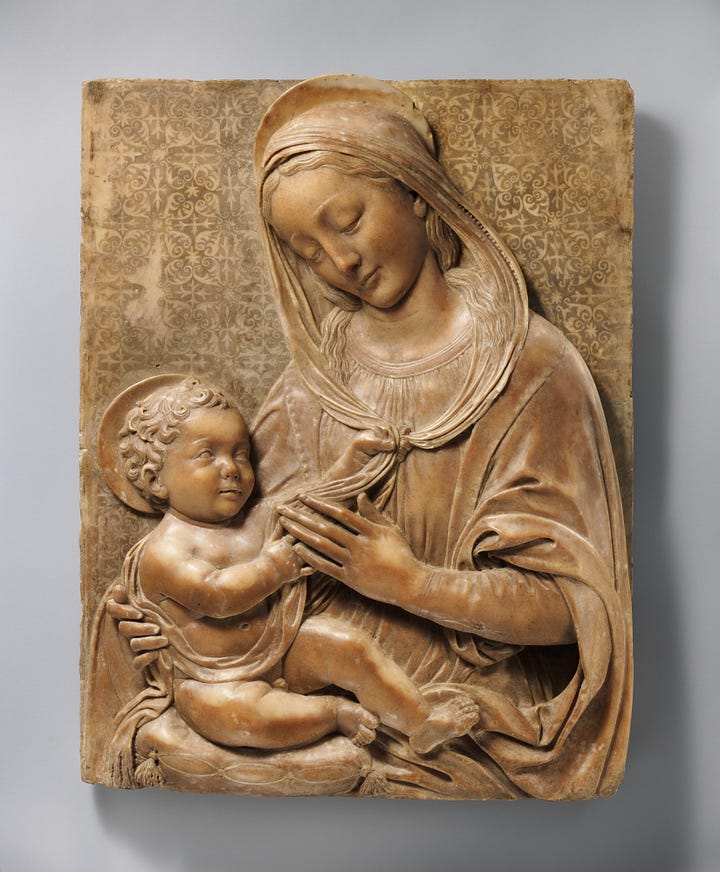
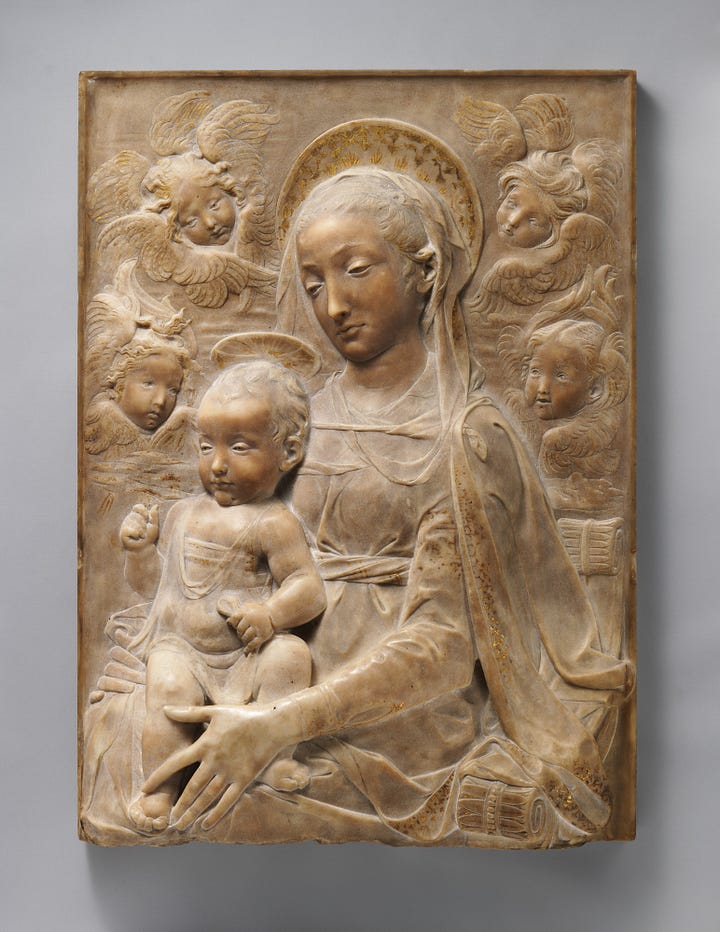
During a visit to the Clark Art Institute in Williamsburg, Massachusetts, a few weeks ago, I came across a Madonna with Child by Italian artist Matteo di Giovanni. What first caught my attention was Mary’s withdrawn and gloomy appearance, but then I noticed an unusual element: Mary holding a small model of a building.
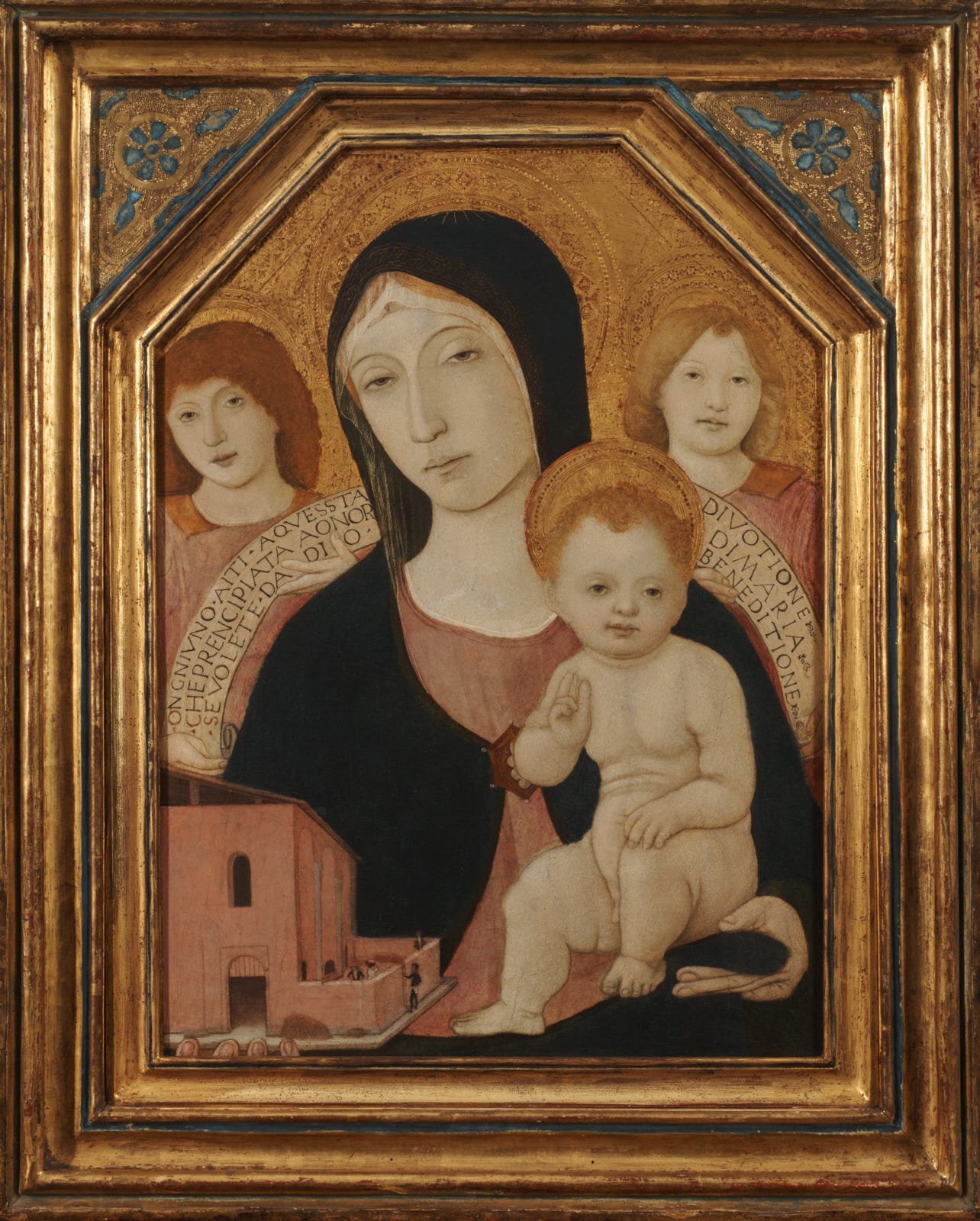
From the placard on the wall next to the piece, I learned that the Italian text on the painting translates to “contribute to this devotion,” suggesting that perhaps this work was used to encourage donations for building a church or monastery like the structure depicted in the painting. Today, I think of these sort of appeals happening online through platforms like GoFundMe or Kickstarter, but I guess back in the 15th century, this was how they fundraised.
Madonna and Child at the MET
The Metropolitan Museum of Art in New York City includes over 1.5 million works in its collection (and images of many of these works are open access!). A search for the terms “Madonna and Child” within the collection results in thousands of hits, though not all of these records refer to the religious subject. The results feature works spanning centuries, geographies, and forms.
I identified another Madonna and Child painting by Matteo di Giovanni in The Met Collection that shares a lot of similarities in composition to the one I saw in person at The Clark and seems to be using the same models for Mary and Jesus.
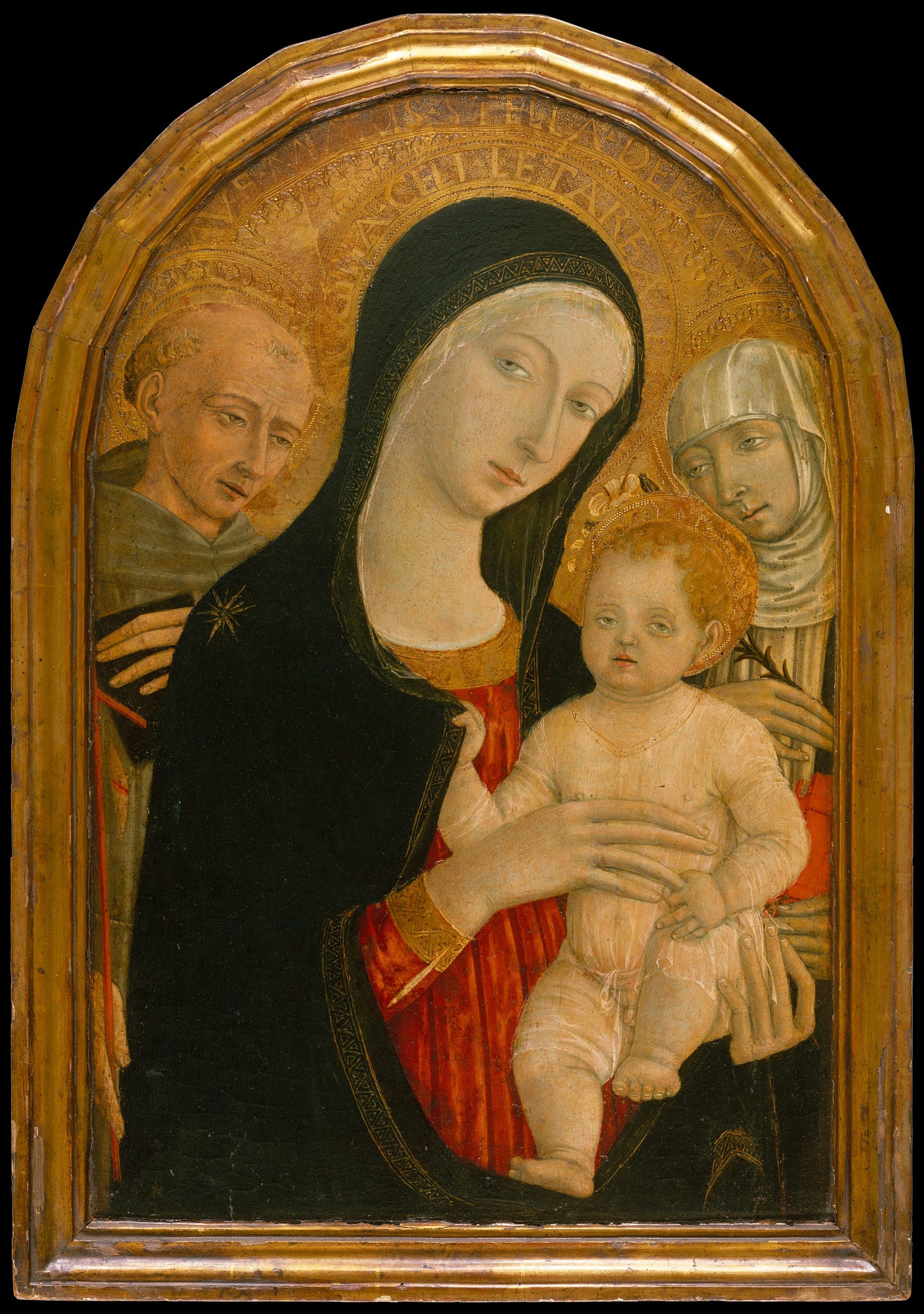
A couple questions that always pop up for me when looking at these works are: (1) who were the women served as models for the artists and (2) how many women over time have been depicted as the Virgin Mary?
Here are some more Madonna and Child works from The Met Collection to enjoy as you contemplate these questions.
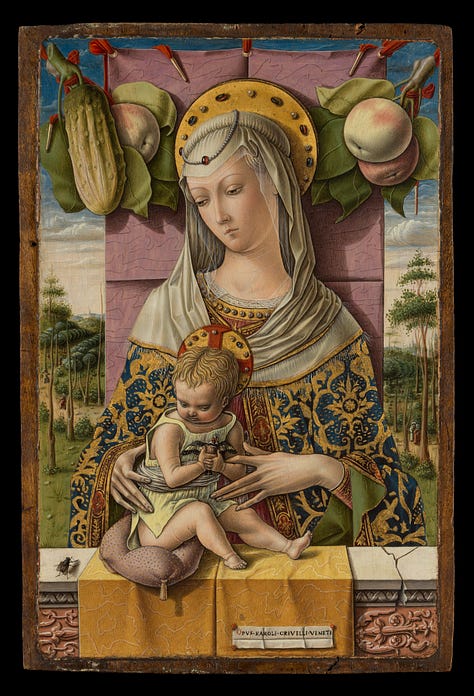
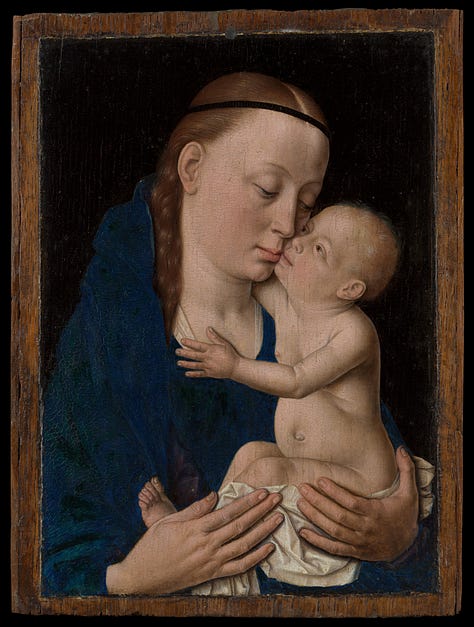
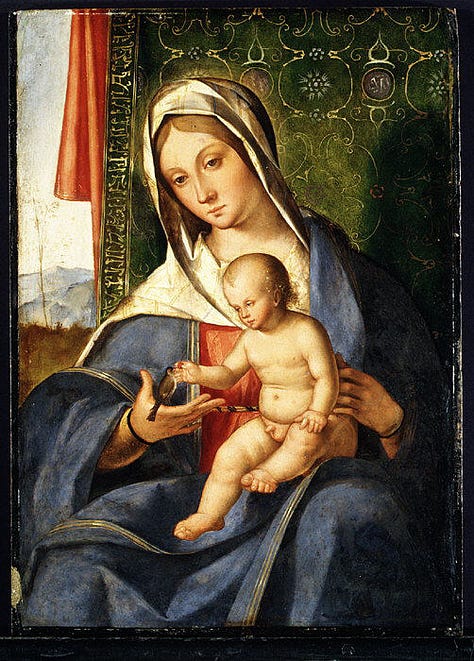
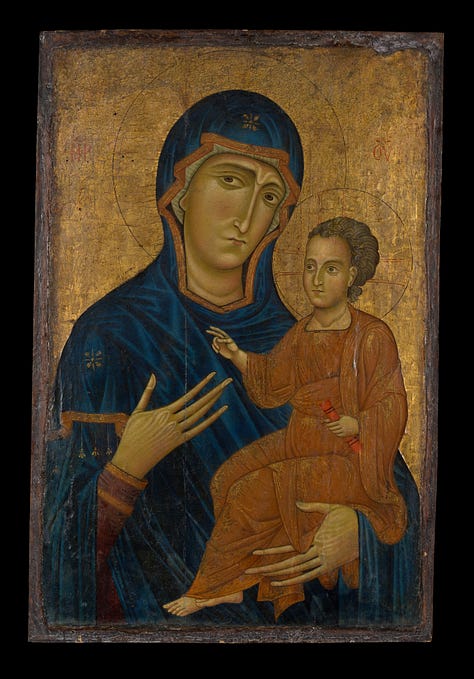

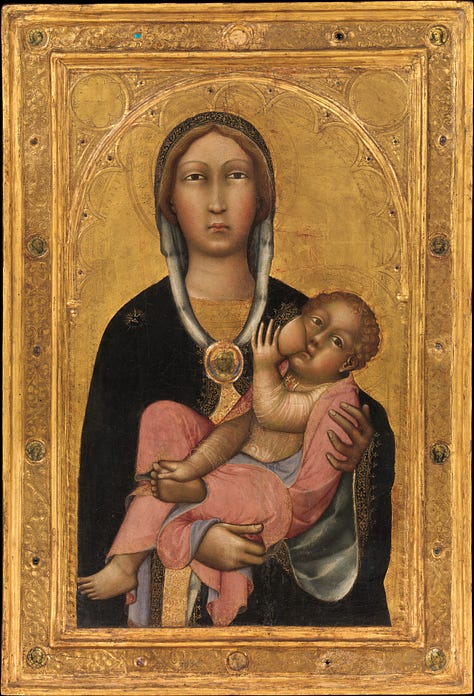





And it seemed none of them ever had an actual live baby as a model of Jesus either! Had they even seen a baby before?
Wow, that house is neat. Good observation!